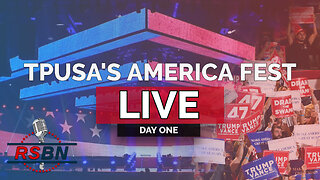Premium Only Content

Flemish Giant Rabbit 101
In today's video, we are going to talk about some interesting information about Flemish Giant Rabbit.
When you talk about a big bunny, the Flemish Giant is one of the biggest. The breed’s weight is typically around 10 to 20 pounds and can grow up to 30 inches long. In 2010, Guinness World Records awarded a 51-inch Flemish Giant the title of the longest rabbit. The ideal Flemish Giant rabbit has a long, muscular, well-proportioned body.
The head is broad and the ears long. The breed standard calls for the ears to be nearly 6 inches long, minimum, and the body length 20 inches, minimum. Ears are carried upright. The fur is a rollback, returning to position gradually after being brushed from tail to head.
Flemish Giant is one of only a few breeds recognized by the American Rabbit Breeders Association to have a semi-arch body type. This means Flemish Giants have a longer body and the high point of the rise along their back occurs atop the hips.
Here are some of the interesting information that you need to know.
1. Flemish Giant's Colors.
The A R B A recognizes seven color varieties of Flemish Giant rabbits, black, blue, fawn, light gray, sandy, steel gray, and white. The National Federation of Flemish Giant Rabbit Breeders shows these on its website.
2. Flemish Giant's History.
Originating in Belgium, the Flemish Giant rabbit is thought by some to be the founding breed for all modern giant rabbits. An article about the Flemish Giant breed’s origins posted on the website of the NFFGRB, the breed club for the Flemish Giant in the United States, notes that the now-extinct Patagonian rabbit of England contributed to the Flemish Giant breed. In Bob D. Whitman’s book “Domestic Rabbits and Their Histories,” the author writes that the Steenkonijn probably also contributed to the Flemish Giant’s development. The Flemish Giant likely first arrived in the United States in the late 18 80s, and a breed club for it formed in 1915 with three recognized colors, light gray, steel, and black.
3. Flemish Giant's Personality.
Laid-back and easygoing are two phrases that pop up a lot in descriptions of Flemish Giants. While many of this breed might embody those characteristics, always keep in mind that every rabbit is different, generalizations don’t always hold true. Flemish Giants do seem to be big, lovable rabbits.
One thing all rabbits do have in common is being a prey species. This means that they are warier of new situations. They need to assess whether something or someone is a threat to them. Build trust with your furry pal by moving slowly around him or her and respecting his or her wishes and space. The more you get to know your rabbit, the more the personality will shine through.
4. Taking Care of Flemish Giant Rabbits.
When caring for your Flemish Giant rabbit, consider the following top needs, food, shelter, grooming, and companionship. Safety is also critical, and that applies to all aspects of your bunny’s life. One difference in caring for a Flemish Giant over other rabbit breeds is the size. Being such a big bunny, expect to allocate more space, offer more food, and do a bit more cleaning. A bigger bunny means a bit more of everything.
Rabbit Food. Clean, fresh hay is the go-to food for rabbits. Grass hay makes up about the majority of a healthy, adult rabbit’s diet. Rabbit-specific pellets in limited quantity provide vitamins and minerals that balance out the diet. Limited rabbit-safe vegetables and fruits provide interest and variety as treats. You can also offer limited amounts of nutritious treats like Berries. Clean, fresh water must be available at all times. Dietary needs vary for young, pregnant, nursing, or sick rabbits, so consult your rabbit-savvy veterinarian for advice on feeding such rabbits.
Rabbit Shelter. Your rabbit needs a place of his or her own inside your home. Figure out which option works best for your situation. Your Flemish Giant needs to be able to move freely, lie down, and easily reach what he or she needs. Outfit the home with food and water dishes and bottles, a hideaway, toys, bedding, and a litter box. You also need litter boxes for playtime in an exercise pen or around your home. Keep your rabbit buddy’s home clean with daily spot-cleaning of the litter box and any messes, daily cleaning of food bowls and bottles, and weekly cleaning of the entire space.
===============
Copyright Disclaimer:
We respect the copyright interests of the individual owners in the video and don't claim to own the original clips.
-
 3:45
3:45
BIG NEM
7 hours agoDiscover Your Ikigai: Finding Your Ultimate Purpose
6.5K1 -
 13:19
13:19
Dermatologist Dr. Dustin Portela
1 day ago $1.71 earnedDo You Have Sebaceous Filaments or Blackheads?
5.15K1 -
 2:21:35
2:21:35
Price of Reason
11 hours agoThe Establishment WORRIES about Elon Musk AGAIN! Superman Trailer Discussion! Sonic 3 Review!
36.3K2 -
 1:14:54
1:14:54
Steve-O's Wild Ride! Podcast
14 hours ago $15.64 earnedZac Brown Reveals The Secrets To HIs Success - Wild Ride #247
46.8K12 -
 4:16:43
4:16:43
JdaDelete
8 hours ago $11.48 earnedProject Zomboid with the Boys | The Great Boner Jam of 2025
35.5K -
 6:00:08
6:00:08
SpartakusLIVE
9 hours agoYoung Spartan STUD teams with old gamers for ultimate BANTER with a SMATTERING of TOXICITY
28.1K -
 1:50:39
1:50:39
Kim Iversen
10 hours agoShocking Proposal: Elon Musk for Speaker of the House?! | IDF Soldiers Reveal Atrocities—'Everyone Is a Terrorist'
69.3K162 -
 43:27
43:27
barstoolsports
13 hours agoOld Dog Bites Back | Surviving Barstool S4 Ep. 9
130K3 -
 5:13:04
5:13:04
Right Side Broadcasting Network
7 days agoLIVE REPLAY: TPUSA's America Fest Conference: Day One - 12/19/24
178K28 -
 1:06:01
1:06:01
Man in America
1 day agoPfizer Has Been Caught RED HANDED w/ Dr. Chris Flowers
59.8K15